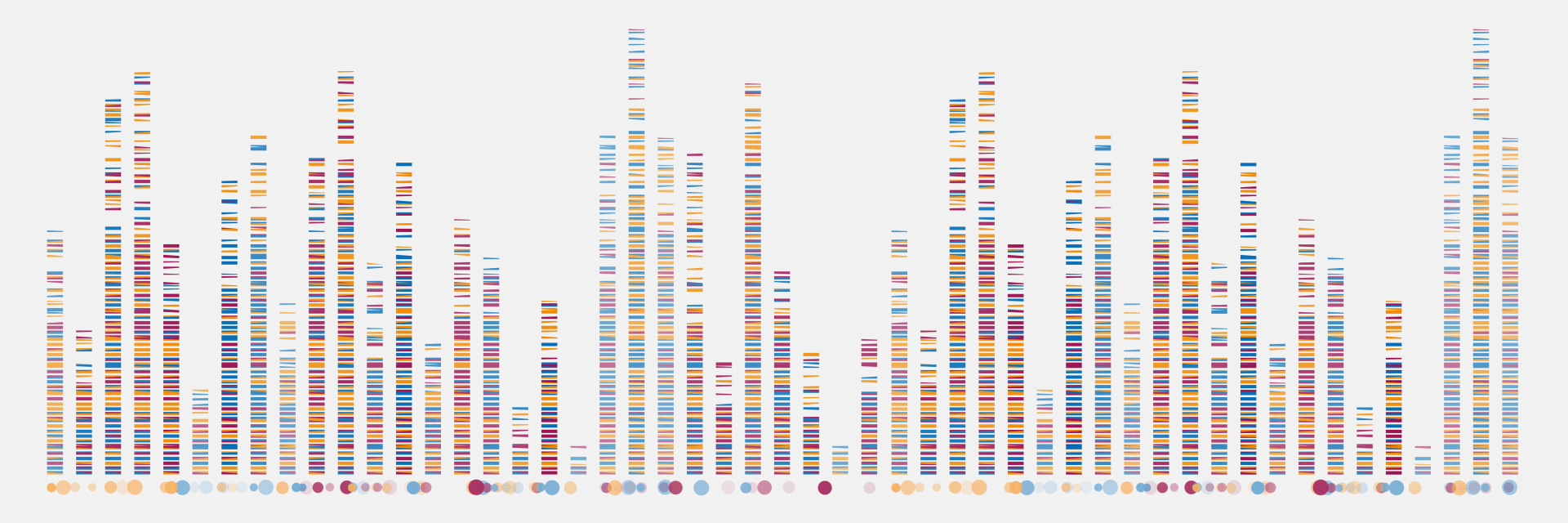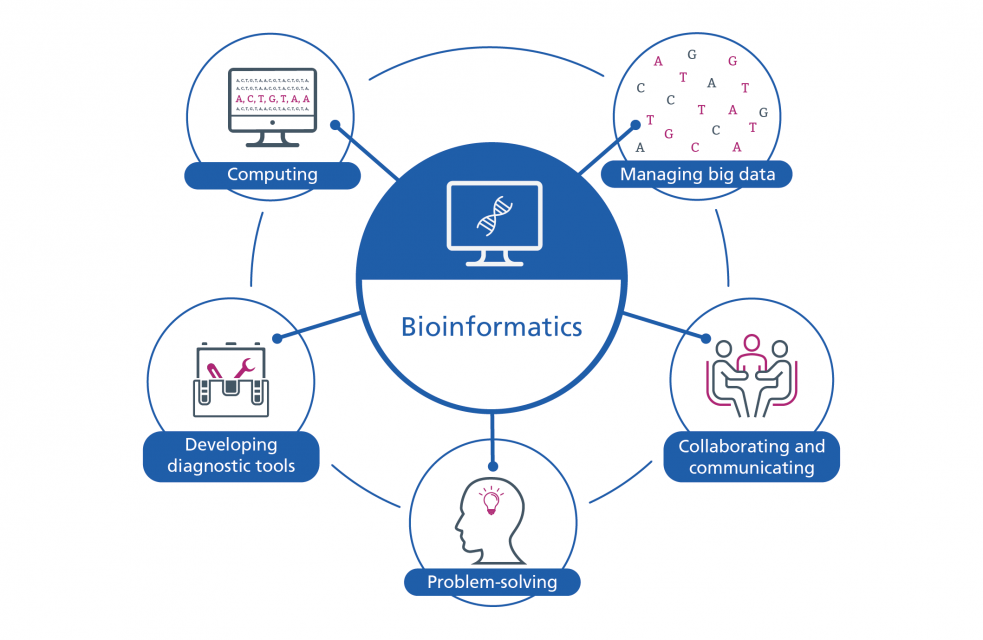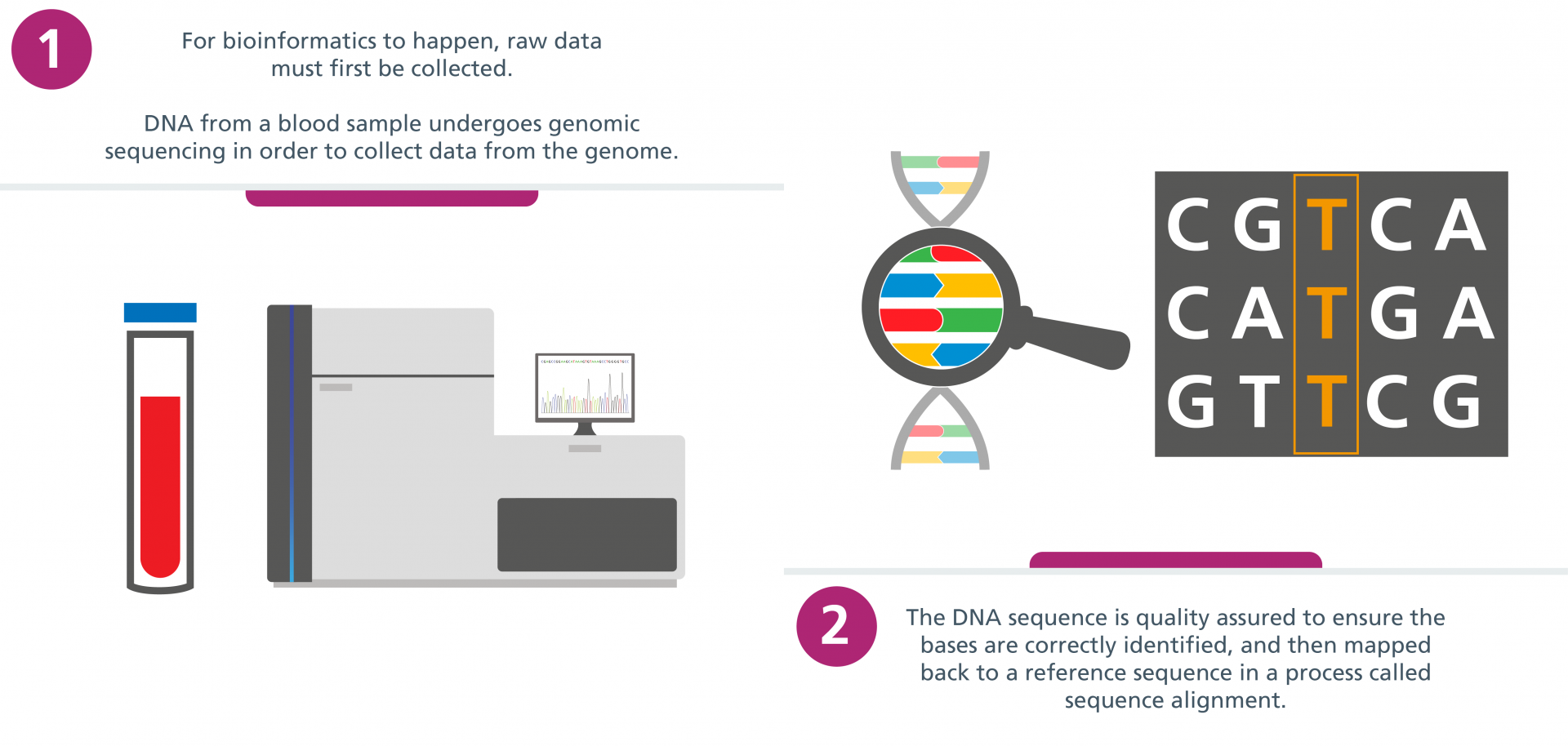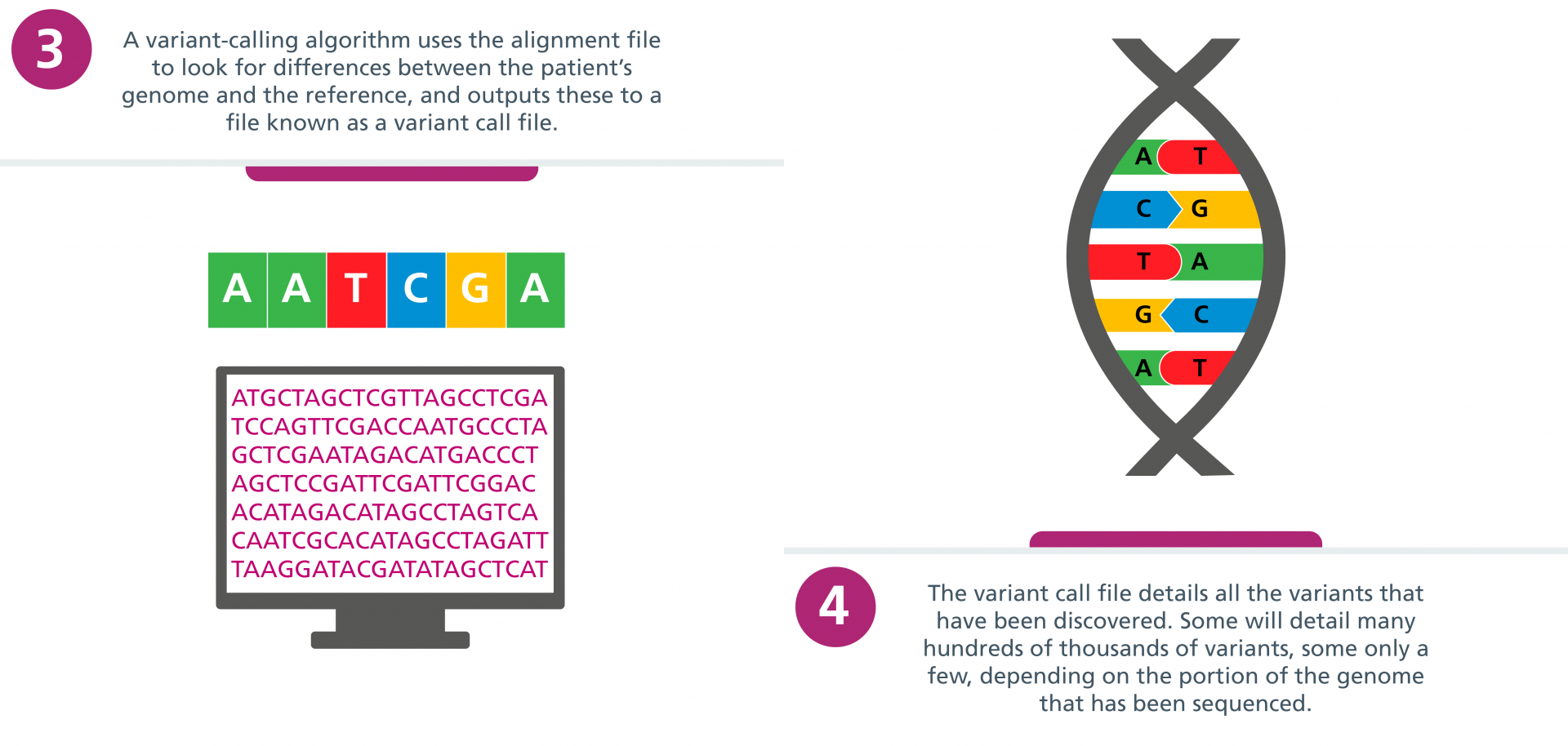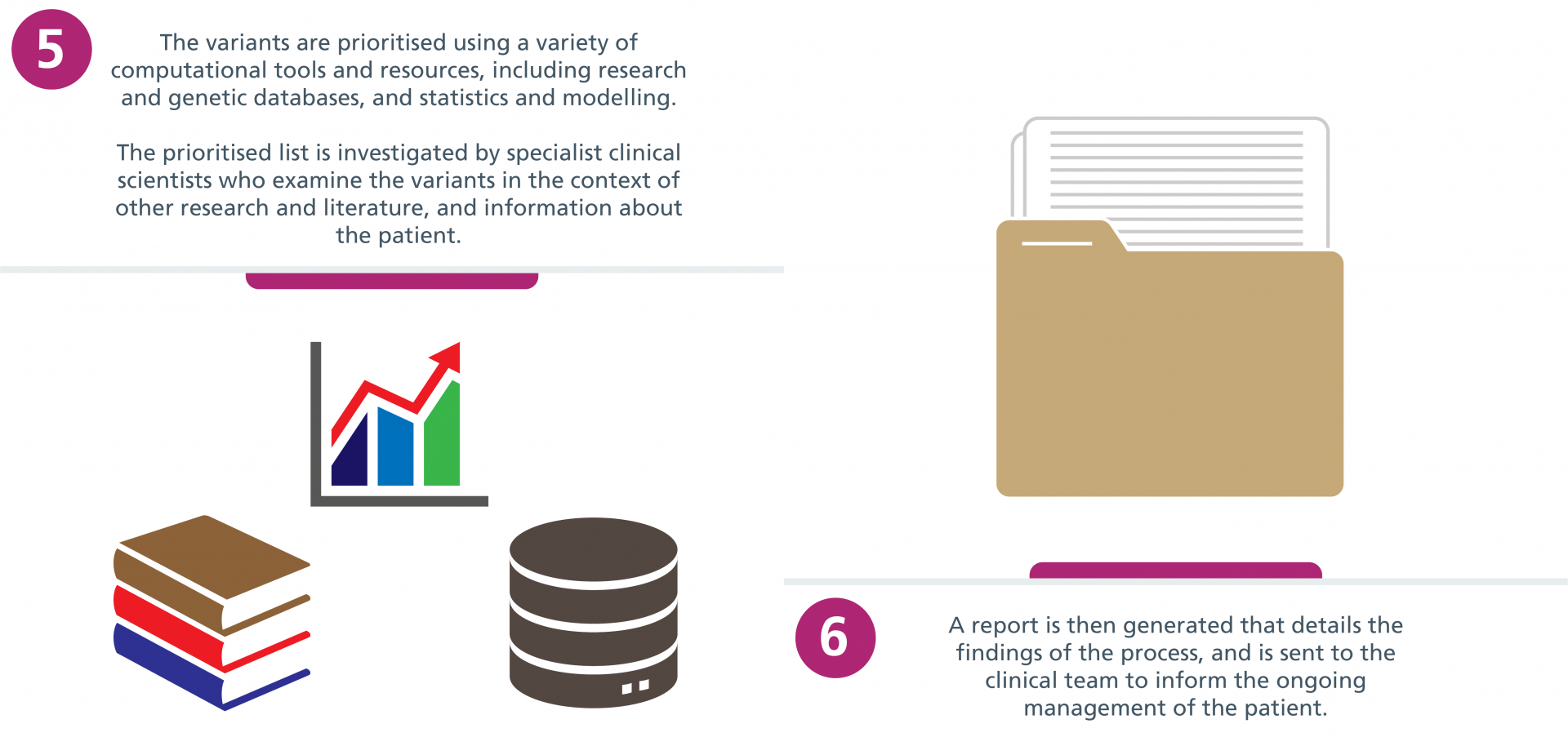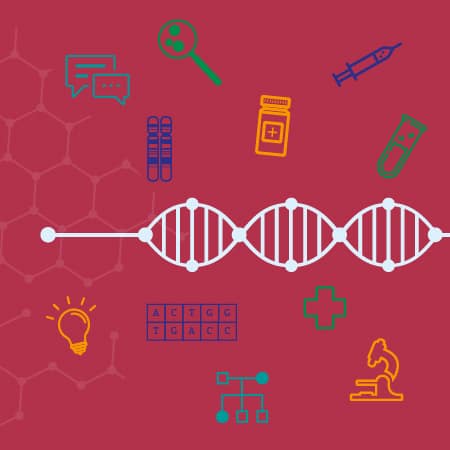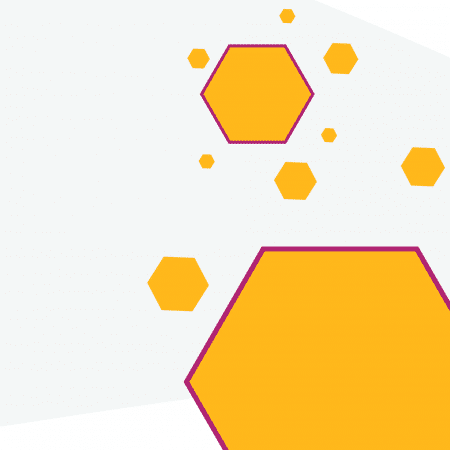Bioinformatics is a relatively new and evolving discipline that combines skills and technologies from computer science and biology to help us better understand and interpret biological data.
One field where bioinformatics is especially useful is genomics, which can generate vast quantities of information. Bioinformatics helps to give meaning to the data, which can be used to make a diagnosis for a patient with a rare condition, to track and monitor infectious organisms as they move through a population, or to identify the best treatment for a patient with cancer.
Take a look at the infographic for an overview of bioinformatics and its key components.
In healthcare, clinical bioinformaticians work within a wider team including clinical geneticists and laboratory scientists to help provide answers for patients diagnosed with rare disease or cancer.
The main role of the clinical bioinformatician is to create and use computer programs and software tools to filter large quantities of genomic data – usually gathered through next-generation sequencing methods, such as whole genome sequencing (WGS) or whole exome sequencing. In doing so, bioinformaticians aim to find meaning in this overwhelming amount of information and provide clinically actionable solutions to help patients.
Watch the video to hear from a variety of clinical bioinformaticians about their diverse role.
So, it is helpful to think of bioinformaticians as librarians. They are responsible for indexing and categorising data to make it accessible and to find the best and most accurate answer for each specific request. But how do they do it?
Bioinformatics is used in a variety of genomic tests, but it is useful in genome sequencing – and especially WGS – owing to the amount of data that is generated from a person’s genome.
After a sample has been collected from a patient and their DNA has been extracted, it will be sequenced by a machine to produce a set of data files. This is where bioinformatics comes in.
These files are then filtered and analysed by bioinformaticians in pipelines, each with a different and specialised series of steps, depending on the clinical question and the type of sample that has been sequenced.
The result of all the work a bioinformatician has done is a list of annotated variants, which will then be interpreted by a clinical scientist to produce a clinical report.
This report is tailored to each individual case, with the aim of helping to guide the healthcare management of the patient and their family. It is important to remember, though, that results are not always conclusive.
Click through the carousel below to follow the bioinformatics journey of a patient's DNA being tested for a specific rare disease.
Although powerful sequencing technologies and skilled bioinformaticians can provide us with a detailed understanding of a person’s genome, it is impossible to know everything. Genomics is a rapidly evolving field and bioinformaticians are limited by the accuracy of the references they have available to them. In other words, even the best data is still only as accurate as our current understanding of it.
One advantage we do have, however, is our ability to revisit and reanalyse the same patient data in light of new evidence, without having to request more DNA or resequencing existing samples. As more genomes are sequenced and technology improves, our understanding of the data will only increase, allowing for positive outcomes for more patients.
Watch the video to hear principal clinical bioinformatician Sanjeev Bhaskar talk in more detail about the impact of bioinformatics on patient care.
Do you want to discover more about bioinformatics and how it is used in healthcare? Why not try one of our resources, below!
If you're thinking about a bioinformatics career, a common entry point into the profession for UK students is the NHS Scientist Training Programme, which has a clinical bioinformatics pathway.


